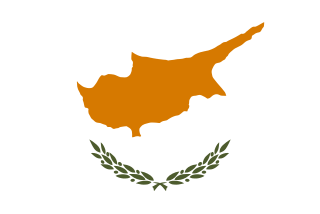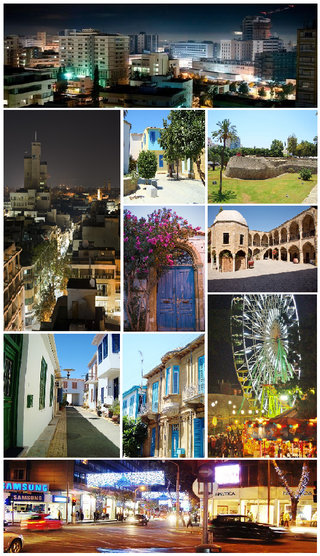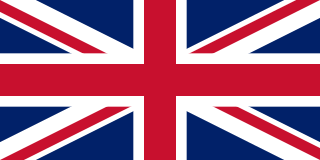
Cyprus, officially the Republic of Cyprus, is an island country located in the eastern Mediterranean Sea, north of the Sinai Peninsula, south of the Anatolian Peninsula, and west of the Levant. It is geographically a part of West Asia, but its cultural ties and geopolitics are overwhelmingly Southeast European. Cyprus is the third-largest and third-most populous island in the Mediterranean. It is located east of Greece, north of Egypt, south of Turkey, and west of Lebanon and Syria. Its capital and largest city is Nicosia. The northeast portion of the island is de facto governed by the self-declared Turkish Republic of Northern Cyprus.

Ministry of Agriculture, Rpenural Development and the Environment. Minister: Petros Xenophontos
- Ministry of Energy, Commerce and Industry. Minister: Giorgos Papanastasiou
- Ministry of Transport, Communications and Works. Minister: Alexis Vafiades
- Ministry of Defenceepe. Minister: Michalis Georgallas
- Ministry of Education, Sport and Youth. Minister: Dr Athena Michaelidou
- Ministry of Finance. Minister: Makis Keravnos
- Ministry of Foreign Affairs. Minister: Constantinos Kombos
- Ministry of Health. Minister: Popi Kanari
- Ministry of the Interior. Minister: Constantinos Ioannou
- Ministry of Justice and Public Order. Minister: Anna Prokopiou
- Ministry of Labour and Social Insurance: Yiannis Panayiotou

Nicosia is the divided capital city of the Republic of Cyprus and the de facto Northern Cyprus.

Limassol is a city on the southern coast of Cyprus and capital of the district with the same name. Limassol is the second largest urban area in Cyprus after Nicosia, with an urban population of 195,139 and a metropolitan population of 262,238.

Halloumi or haloumi is a cheese of Cypriot origin made from a mixture of goat's and sheep's milk, and sometimes also cow's milk. Its texture is described as squeaky. It has a high melting point and so can easily be fried or grilled, a property that makes it a popular meat substitute. Rennet is used to curdle the milk in halloumi production, although no acid-producing bacteria are used in its preparation.

Northern Cyprus, officially the Turkish Republic of Northern Cyprus (TRNC), is a de facto state that comprises the northeastern portion of the island of Cyprus. It is recognised only by Turkey, and its territory is considered by all other states to be part of the Republic of Cyprus.
This gallery of sovereign state flags shows the national or state flags of sovereign states that appear on the list of sovereign states. For flags of other entities, please see gallery of flags of dependent territories. Each flag is depicted as if the flagpole is positioned on the left of the flag, except for those of the Islamic Emirate of Afghanistan, Iran, Iraq, and Saudi Arabia, which are depicted with the hoist to the right.

The Cyprus national football team represents Cyprus in men's international football and is controlled by the Cyprus Football Association, the governing body for football in Cyprus. Cyprus' home ground is currently the AEK Arena in Larnaca, and the current coach is Temur Ketsbaia.

Akrotiri and Dhekelia, officially the Sovereign Base Areas of Akrotiri and Dhekelia (SBA), is a British Overseas Territory on the island of Cyprus. The areas, which include British military bases and installations formerly part of the Crown colony of Cyprus, were retained by the British under the 1960 treaty of independence signed by the United Kingdom, Greece, Turkey and representatives from the Greek and Turkish Cypriot communities. The territory serves an important role as a station for signals intelligence and provides a vital strategic part of the United Kingdom surveillance-gathering network in the Mediterranean and the Middle East.

At the national level, the Republic of Cyprus holds elections for its head of state, the President of Cyprus, and for its legislature, the House of Representatives.

The Turkish invasion of Cyprus began on 20 July 1974 and progressed in two phases over the following month. Taking place upon a background of intercommunal violence between Greek and Turkish Cypriots, and in response to a Greek junta-sponsored Cypriot coup d'état five days earlier, it led to the Turkish capture and occupation of the northern part of the island.

Cyprus is divided into six districts, whose capitals share the same name. The districts are subdivided into municipalities and communities. The districts of Cyprus are listed in the table below.
The Cypriot First Division, known as the Cyta Championship for sponsorship reasons, is the top tier football league competition in Cyprus, run by the Cyprus Football Association.

The House of Representatives is the national unicameral legislature of the Republic of Cyprus. Members and three observers representing Armenian, Latin, and Maronite Cypriots are elected by proportional representation every five years. 30% of seats are allocated to Turkish Cypriots, but these have been vacant since 1964. The House of Representatives of Cyprus is the only legislature in Europe within a fully presidential system.
The Cypriot mouse is a species of mouse endemic to Cyprus. Its primary habitat seems to be the vineyards and fields of the Troödos Mountains region.
The Cypriot Super Cup is a Cypriot football trophy, contested in an annual match between the previous season's Cypriot First Division champions, and the Cypriot Cup winners. The match is contested at the beginning of the football season, and is usually played at the GSP Stadium in Nicosia. The most successful team in the competition are Omonia, who have won the trophy on 17 occasions.

The following outline is provided as an overview of and topical guide to Cyprus:

British Cyprus was the island of Cyprus under the dominion of the British Empire, administered sequentially from 1878 to 1914 as a British protectorate, from 1914 to 1925 as a unilaterally annexed military occupation, and from 1925 to 1960 as a Crown colony. Following the London and Zürich Agreements of 19 February 1959, Cyprus became an independent republic on 16 August 1960.